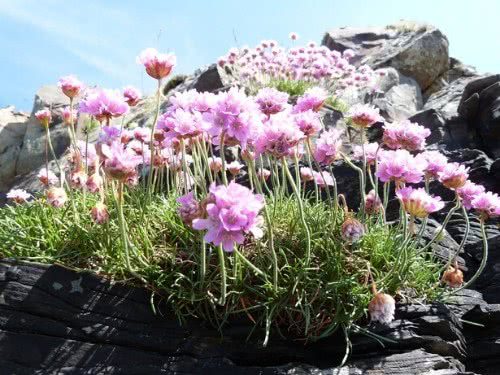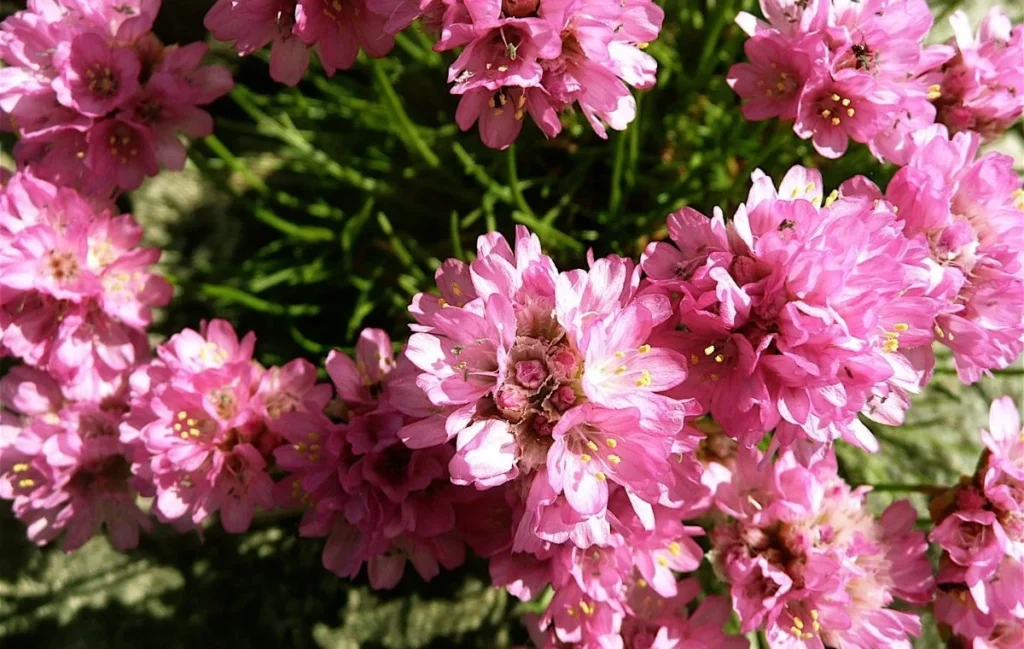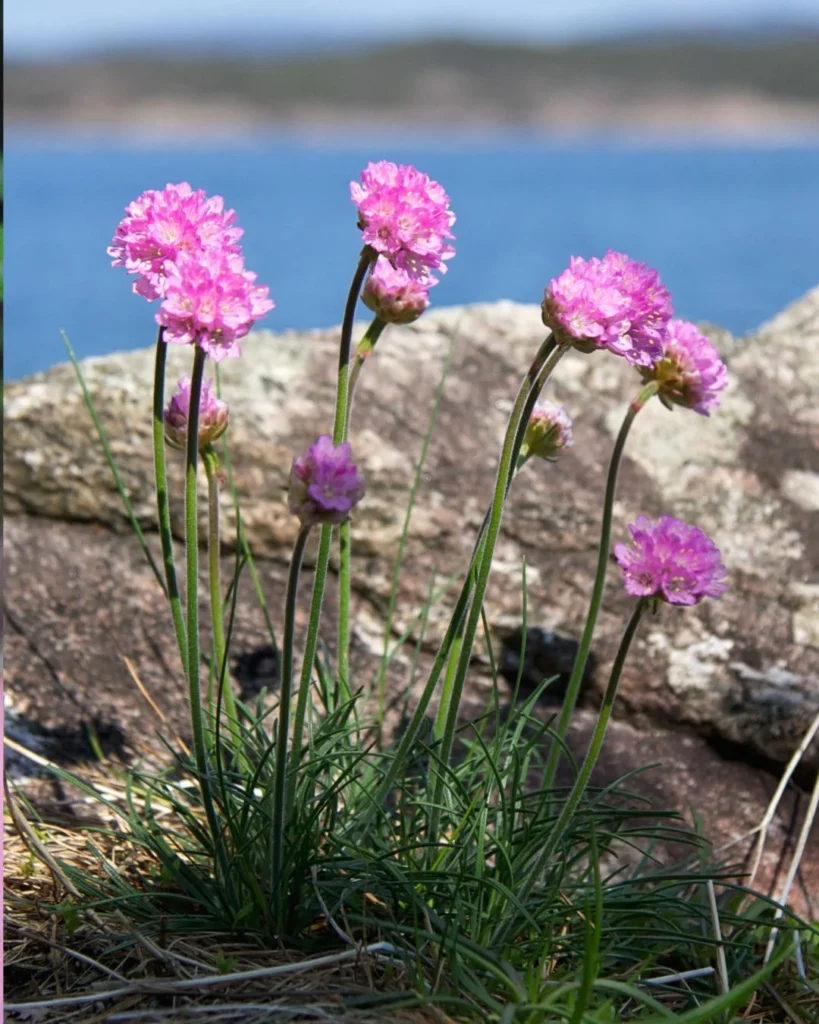Sea Pink is a perennial, herbaceous, and floriferous species of great ornamental value. It originates from the coast of Portugal and Spain, where it thrives in sandy areas, resembling a marsh plant. Its foliage forms dense tufts that reach 12 cm (4.7 inches) in height, featuring long, narrow, linear leaves of dark green color, reminiscent of grass blades. During spring and summer, it produces tall inflorescences on long stems, approximately 30 cm (11.8 inches) in height, with a globular shape resembling a pom-pom.
These inflorescences are composed of numerous bell-shaped flowers. While the flowers are typically pink, they can also appear in white, red, or lilac, depending on the cultivar. Varieties such as ‘Alba’ have white flowers, ‘Vindictive’ displays vibrant pink blooms, ‘Bloodstone’ showcases bright red petals, and ‘Laucheana’ exhibits dark green foliage paired with brilliant pink flowers.

Commonly grown in pots or garden beds, Sea Pink forms rounded, dense “cushions.” When planted en masse or used as edging, it becomes a captivating highlight in the garden due to its attention-grabbing profusion of flowers. It’s also excellent for cut or dried arrangements, as its flowers boast remarkable longevity. Another striking use is as ground cover, filling in small spaces between stones and pathways, creating an engaging contrast with its lush green foliage and pink blossoms against the backdrop.
Enhance Sea Pink’s charm by pairing it with less voluminous plants that vary in texture and color, opting for complementary hues like yellow or analogous shades like purple and white.
It also complements other ground cover plants. Moreover, Sea Pink acts as a magnet for bees, butterflies, and other pollinators, elevating the garden’s overall appeal. Maintenance is straightforward and involves trimming dried flowers to encourage new blooms. Even when left on the plant, the faded blooms retain their beauty.
This plant thrives in full sun and prefers sandy, well-draining, and rocky soils enriched with organic matter. Sea Pink appreciates the distinct seasons’ climate and is easy to cultivate due to its undemanding nature. While it tolerates winter cold, it’s not resilient to severe frosts; however, it regenerates in spring, behaving like an annual. Regular watering is essential. It can withstand the salinity of coastal regions.
Fertilize with an NPK ratio of 04.14.08 during growth and flowering. Replant every 4 years by dividing clumps to refresh garden beds. Propagation is achieved through clump division or sowing seeds. For seeding, autumn is the ideal time, with germination occurring in around 14 days.



